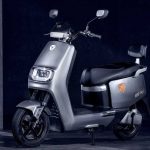Regenerative braking in electric scooters is definitely not just a gimmick. It offers real and measurable benefits in the long run, contributing to both increased range and improved energy efficiency. Here’s a breakdown of its advantages:
Benefits of Regenerative Braking:
- Increased Range: During braking, kinetic energy (the energy of motion) is typically wasted as heat. Regenerative braking captures this energy and converts it back into electricity, which is then used to recharge the scooter’s battery. This can add a small but significant boost to the overall range of the scooter on a single charge. Estimates suggest a potential increase of up to 20% in range.
- Improved Energy Efficiency: By capturing wasted energy and putting it back into use, regenerative braking reduces the overall energy consumption of the scooter. This translates to less reliance on external power sources to recharge the battery, leading to a more sustainable and environmentally friendly operation.
- Reduced Wear and Tear on Brakes: Traditional friction brakes rely on physical contact to slow down the vehicle, which can cause wear and tear over time. Regenerative braking supplements the traditional brakes, reducing the mechanical stress on them and potentially extending their lifespan.
- Quieter Operation: Regenerative braking generates electricity without the need for additional mechanical components, contributing to a quieter overall riding experience.
Limitations to Consider:
While beneficial, regenerative braking has some limitations:
- Limited Impact at High Speeds: The system is most effective at lower speeds when the kinetic energy being captured is less. At higher speeds, traditional brakes take over, and the regenerative effect is minimal.
- Terrain Dependence: The effectiveness of regenerative braking can be influenced by terrain. Downhill slopes offer more opportunity for energy capture compared to flat or uphill terrain.
- Battery Capacity: The recovered energy needs to be stored in the battery. If the battery is already fully charged, the regenerative system cannot capture additional energy.
Overall:
Regenerative braking is a valuable technology in electric scooters. While it may not single-handedly double your range, it contributes to extending your rides and improving the overall energy efficiency of your scooter. In the long run, it translates to cost savings on electricity and potentially less wear and tear on your brakes. So, regenerative braking is definitely not just a gimmick – it’s a practical feature that contributes to a more sustainable and enjoyable electric scooter experience.





